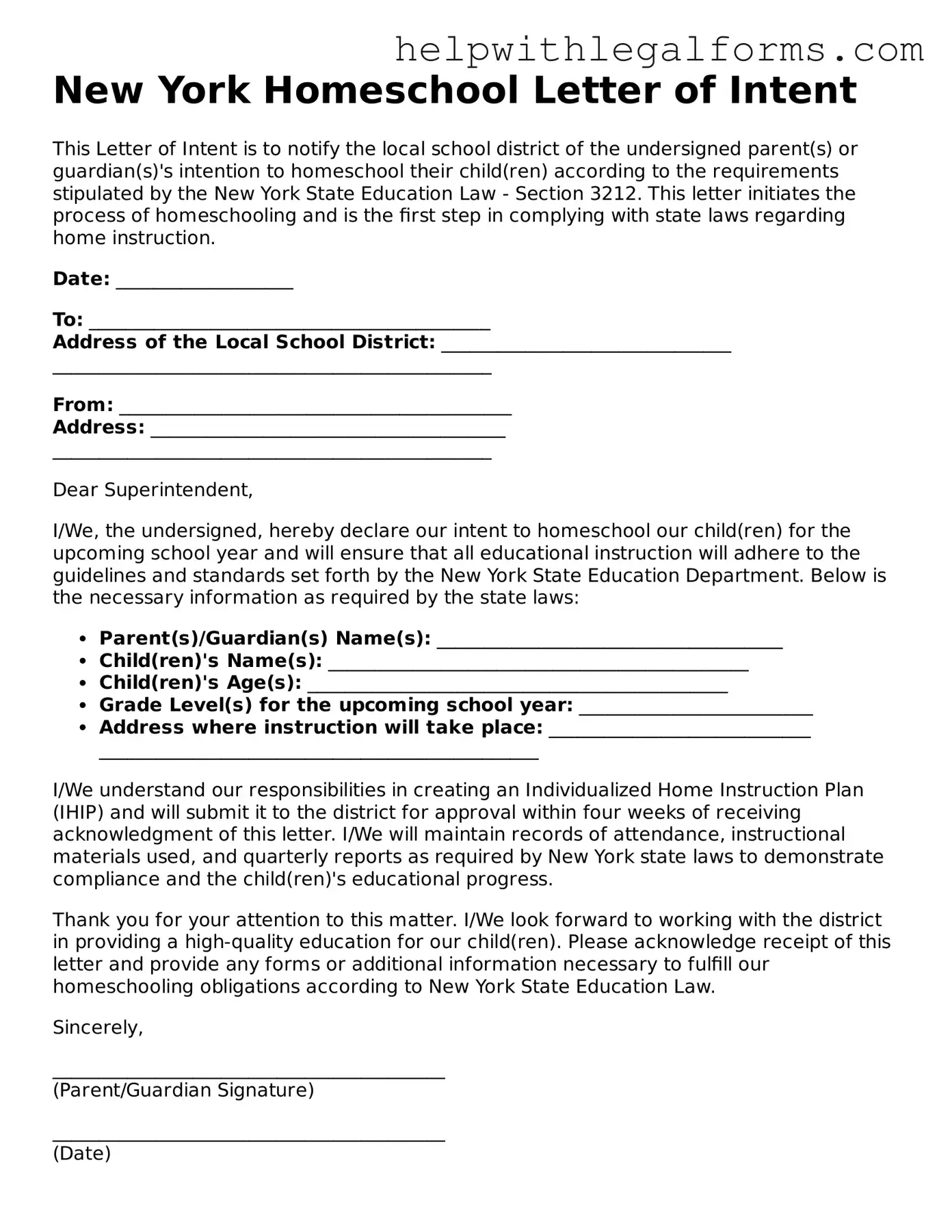New York Homeschool Letter of Intent
This Letter of Intent is to notify the local school district of the undersigned parent(s) or guardian(s)'s intention to homeschool their child(ren) according to the requirements stipulated by the New York State Education Law - Section 3212. This letter initiates the process of homeschooling and is the first step in complying with state laws regarding home instruction.
Date: ___________________
To: ___________________________________________
Address of the Local School District: _______________________________
_______________________________________________
From: __________________________________________
Address: ______________________________________
_______________________________________________
Dear Superintendent,
I/We, the undersigned, hereby declare our intent to homeschool our child(ren) for the upcoming school year and will ensure that all educational instruction will adhere to the guidelines and standards set forth by the New York State Education Department. Below is the necessary information as required by the state laws:
- Parent(s)/Guardian(s) Name(s): _____________________________________
- Child(ren)'s Name(s): _____________________________________________
- Child(ren)'s Age(s): _____________________________________________
- Grade Level(s) for the upcoming school year: _________________________
- Address where instruction will take place: ____________________________
_______________________________________________
I/We understand our responsibilities in creating an Individualized Home Instruction Plan (IHIP) and will submit it to the district for approval within four weeks of receiving acknowledgment of this letter. I/We will maintain records of attendance, instructional materials used, and quarterly reports as required by New York state laws to demonstrate compliance and the child(ren)'s educational progress.
Thank you for your attention to this matter. I/We look forward to working with the district in providing a high-quality education for our child(ren). Please acknowledge receipt of this letter and provide any forms or additional information necessary to fulfill our homeschooling obligations according to New York State Education Law.
Sincerely,
__________________________________________
(Parent/Guardian Signature)
__________________________________________
(Date)
